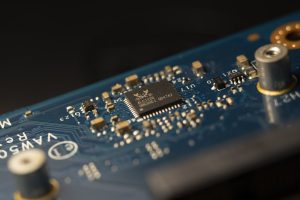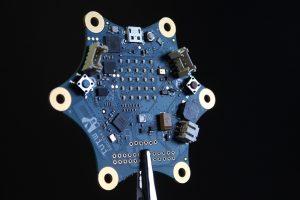Spintronic Memory: Electron Spin Storage
The digital revolution has brought forth an insatiable demand for high-speed and high-density memory storage. With the ever-increasing data generation and consumption, traditional electronic memory devices are facing limitations in speed, density, and power consumption. As a solution, scientists and engineers have been continuously striving to develop new types of memory technologies that can keep up with the exponential growth of data. One such technology that has been gaining prominence in recent years is Spintronic Memory. By utilizing the intrinsic property of electrons known as “spin,” Spintronic Memory offers a groundbreaking approach to store and process data. In this article, we will delve into the world of Spintronic Memory and explore its potential for revolutionizing the digital memory landscape.
The Concept of Spintronic Memory
Spintronics, also known as spin electronics, is the study of the intrinsic spin properties of electrons in their motion. Unlike traditional electronics that rely on the charge of the electron, Spintronics utilizes the spin of the electron to store, process, and transmit information. Spintronic Memory, therefore, utilizes the magnetic field produced by the spin of electrons to store data, thus offering an alternative to traditional electric-based memory devices.
How Does Spintronic Memory Work?
In Spintronic Memory devices, the binary 0s and 1s are represented by the up and down spin states of the electrons, respectively. When an electric current is applied, it can cause a change in the spin state of electrons, thus changing the data value stored. This process is known as “spin injection.” The binary information stored can be read by sensing the change in the resistance of the spintronic material. The major advantage of Spintronic Memory is that it is non-volatile, meaning it retains data even when the power is turned off.
The Advantages of Spintronic Memory
One of the major advantages of Spintronic Memory is its high-speed data access. Since it operates on the spin of electrons, which is faster than their charge-based movement, Spintronic Memory offers faster data transfer rates than traditional memory devices. This makes it suitable for applications that require high processing speeds, such as artificial intelligence, virtual reality, and autonomous vehicles.
Another benefit of Spintronic Memory is its high-density data storage capacity. Spintronic devices can be fabricated on a smaller scale than traditional electronic devices, enabling more data to be stored in a smaller physical form factor. This makes Spintronic Memory a promising solution for the ever-growing data storage needs.
Spintronic Memory is also more energy-efficient compared to traditional memory technologies. Since it operates on the spin of electrons, which requires less energy than their movement, Spintronic Memory devices consume less power. This not only leads to energy savings but also helps in reducing the carbon footprint, making Spintronic Memory an eco-friendly solution.
Applications of Spintronic Memory
The potential applications of Spintronic Memory span across various industries, including computing, telecommunications, and consumer electronics. It can be used in high-performance computers, where speedy data access and processing are crucial. In telecommunications, Spintronic Memories can find application in data centers, internet servers, and communication networks. In consumer electronics, Spintronic Memory can be used in smartphones, tablets, and other mobile devices, providing fast data access and extended battery life.
Spintronic Memory can also be employed in emerging technologies such as quantum computing, where its ability to store and process data at the subatomic level can be harnessed for computing power. In addition, Spintronic Memory can also find applications in data encryption and data security due to its ability to store data without the need for a constant power supply.
Recent Developments in Spintronic Memory
The research and development of Spintronic Memory are still in its early stages. However, recent innovations have shown promising results. In 2018, researchers at the University of Minnesota developed a Spintronic Memory device that is four times faster than conventional Flash memory while consuming only one-tenth of the energy. In the same year, IBM announced the development of the world’s smallest and fastest Spintronic Memory unit. These breakthroughs have paved the way for further research and commercialization of Spintronic Memory.
The Road Ahead
Although Spintronic Memory is still in its nascent stages, it has already shown great potential for revolutionizing the digital memory landscape. With its high-speed data access, high-density storage, and energy efficiency, Spintronic Memory can address the growing need for fast and efficient data processing. As research and development continue, we can expect to see Spintronic Memory becoming a vital part of our digital lives in the near future.
In conclusion, Spintronic Memory, with its unique approach to store and process data, offers a promising alternative to traditional electronic memory devices. Its potential to transform the computing and electronics industry is immense, and with ongoing research and development, we can expect to see more innovations in this field. In a world that is constantly generating and consuming vast amounts of data, Spintronic Memory might just be the key to unlocking the next generation of digital memory systems.











